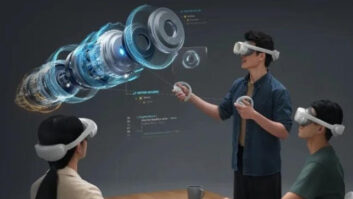The new year is upon us, and to mark that I offer up some thoughts on some of the issues the market faces.
Based on preliminary results, it looks like 2004 will have been the 18th consecutive year in which analog color TV sales to dealers exceeded 20 million. And half of those sold last year, and in the immediately preceding couple of years, were either big-screen color, which CEA classifies as “Home Theater” class, which means 25-inch and over direct-view and projection, or combinations with VCRs and/or DVD players.
Now, the FCC originally set 2006 as the goal for converting all broadcast TV to digital. Not even the most enthusiastic digital supporters now feel that deadline is even a possibility. It’s not that digital TVs aren’t selling. In 2003 the industry moved 4 million, better than doubling the number of sets in use, and something in excess of 6 million were expected to have been sold last year. That puts the number of sets in use at about 14 million. Allowing for a normal progression, by the start of 2006 there could be as many as 25 million.
By the same token, allowing a well-below-average eight year useful life for an analog color TV, there will be, conservatively, 175 million to 200 million relatively new analog color sets in the homes of U.S. consumers. And, oh yes, no more than half of the digital models in use have digital tuners. In addition, only about half of all TV stations are presently equipped to transmit a digital signal.
So what’s realistic for the turning off of the analog TV broadcast faucet? Well, there’s a measure pending in Congress that would provide hundreds of millions of dollars to pay for, or subsidize, the purchase of tuners that would convert the digital signal to analog. But that would not start until 2008 and would involve a market-by-market rollout.
Even the CEA, digital’s biggest booster, recognizes that the complete digital takeover is some way off.
On another video topic, there are currently TV ads being run that call the attention of parents to the use of the V-chip installed in all new color sets. You remember the V-chip, which I consider second only to the mandatory captioning decoder as the most useless feature ever installed in an industry product. At least the decoder has some practical applications. First and foremost, it’s a boon to the hearing impaired, and second, it allows patrons in noisy sports bars to keep up with the aimless chatter emanating from the broadcast booth.
What’s wrong with the V-chip? Well, first you have to learn to use it. Strike one. Then you have to make rational decisions as to how much sex, how much violence, how much bad language you want your kids to have access to. Strike two. Then you have to memorize and enter your password to allow adults access; have a copy somewhere just in case; and hide it so the kids can’t find it. Strike three, it’s out.
On a similar subject, Congress, under the motto “Never Give Up on a Stupid Idea,” has been convinced by those who feel parents need to be “further empowered” that the different rating systems used by the movies, broadcasters and videogame makers are inadequate and confusing to consumers.
The governmental response is typical: to call for hearings where members of “The Society of Those Who Make a Living Decrying the Quality of Programming Children Might Possibly See,” also known as “the usual suspects,” propose strict new laws calling for a legislated return to the days of Andy Hardy, Pong and “Leave it to Beaver.”
Of course, any such major change in rating systems of movies and broadcast TV would probably make all the V-chips now in use obsolete.













